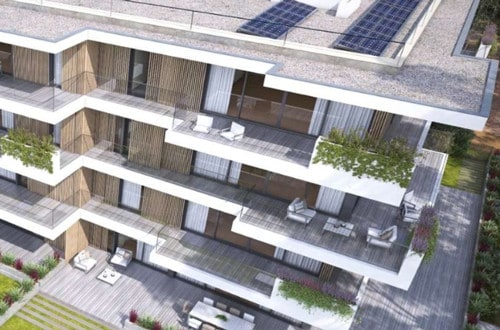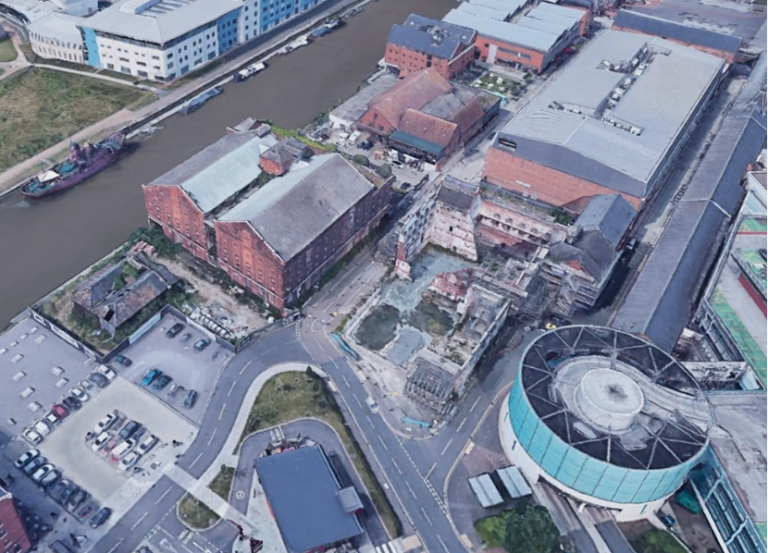Oxford: Is the housebuilding industry closer to adopting modern methods of construction

The proportion of homes built using modern methods of construction (MMC) over the next 10 years will rise from around 8% today closer to 20% according to a new report from real estate adviser Savills.
 Jamie Willis, from the development team at Savills Oxford, said: “While there are still only a small number of developers using MMC, house types are increasingly energy efficient and architecturally considered and locally we are seeing developers finding new ways to be more competitive when bidding on land. The pandemic is likely to be the turning point, accelerating change and seeing the industry fully embrace MMC.”
Jamie Willis, from the development team at Savills Oxford, said: “While there are still only a small number of developers using MMC, house types are increasingly energy efficient and architecturally considered and locally we are seeing developers finding new ways to be more competitive when bidding on land. The pandemic is likely to be the turning point, accelerating change and seeing the industry fully embrace MMC.”
The report from Savills found that the three main drivers behind adoption are: the cost and availability of labour, housing supply shortages and regulatory or government intervention.
Ed Keeling, head of development for Savills Reading, commented: “Although it is acknowledged that the cost of adopting MMC is generally higher than continuing with business as usual labour shortages are driving up construction costs. Adoption of MMC, which improves productivity and reduces onsite labour offers a potential solution.”
“The need to improve energy efficiency and reduce the environmental impact of housebuilding is a further driver of change. Building homes under factory-controlled conditions allows much tighter tolerances to be met – improving energy efficiency and reducing waste.”
The UK was already facing three main challenges before we entered the current pandemic:
- The Farmer report highlighted that between 2016-2026 around 62,000 workers would retire each year – and Government’s latest figures show only around 23,000 new apprentices starting each year.
- Despite housing delivery increasing steadily over the past few years, the number of new homes built still needs to increase by 24% to reach 300,000 homes per annum – a tall order using traditional construction methods alone.
- If we are serious about meeting the pledge to be carbon neutral by 2050 then the energy efficiency of homes will need to dramatically improve along with reducing the environmental impact of construction.
Covid-19 has the potential to accelerate increased adoption of MMC and the ‘Homes for Heroes’ campaign, if fulfilled, would provide the certainty of demand needed for manufacturers to attract investment and scale up production.
Keeling added: “Nationally, 100 schemes utilising MMC have been identified in the development pipeline, combined these total around 17,000 new homes across a range of tenures.”
New use for warehouse space
Savills notes that up to 40 new factories will be needed across the country in order to meet the increase in demand for modular housing in the UK, if an additional 40,000 units are to be delivered annually by MMC.
Looking at the existing market, up to 150 sq ft (13 sq m) of warehouse space will be required per additional unit, equating to circa 6 million sq ft (557,418 sq m) in total. Research suggests that if this capacity was required imminently then it would increase the average amount of transactions for warehouse units over 100,000 sq ft (9,290 sq m) by as much as 37%. However, it is more likely that space will be taken over a longer time frame, along with the ebbs and flows of housing demand.
However, the availability of warehousing is historically low, which has been compounded by the rise in online retail, especially in light of the Covid-19 pandemic. Consequently, vacancy rates stand at just 6.8%. To date, this has not impacted on MMC requirements as the majority of factory space has in fact been retrofitted second-hand stock. Nevertheless, Savills believes that as the industry matures it is likely that efficiencies will require more bespoke product. This is likely to see an increase in demand for Build-to-Suit (BTS) units, but this could have cost implications for operators, as the average lease length for a BTS unit in 2019 was 18 years, compared with just 12 years for second-hand space.












